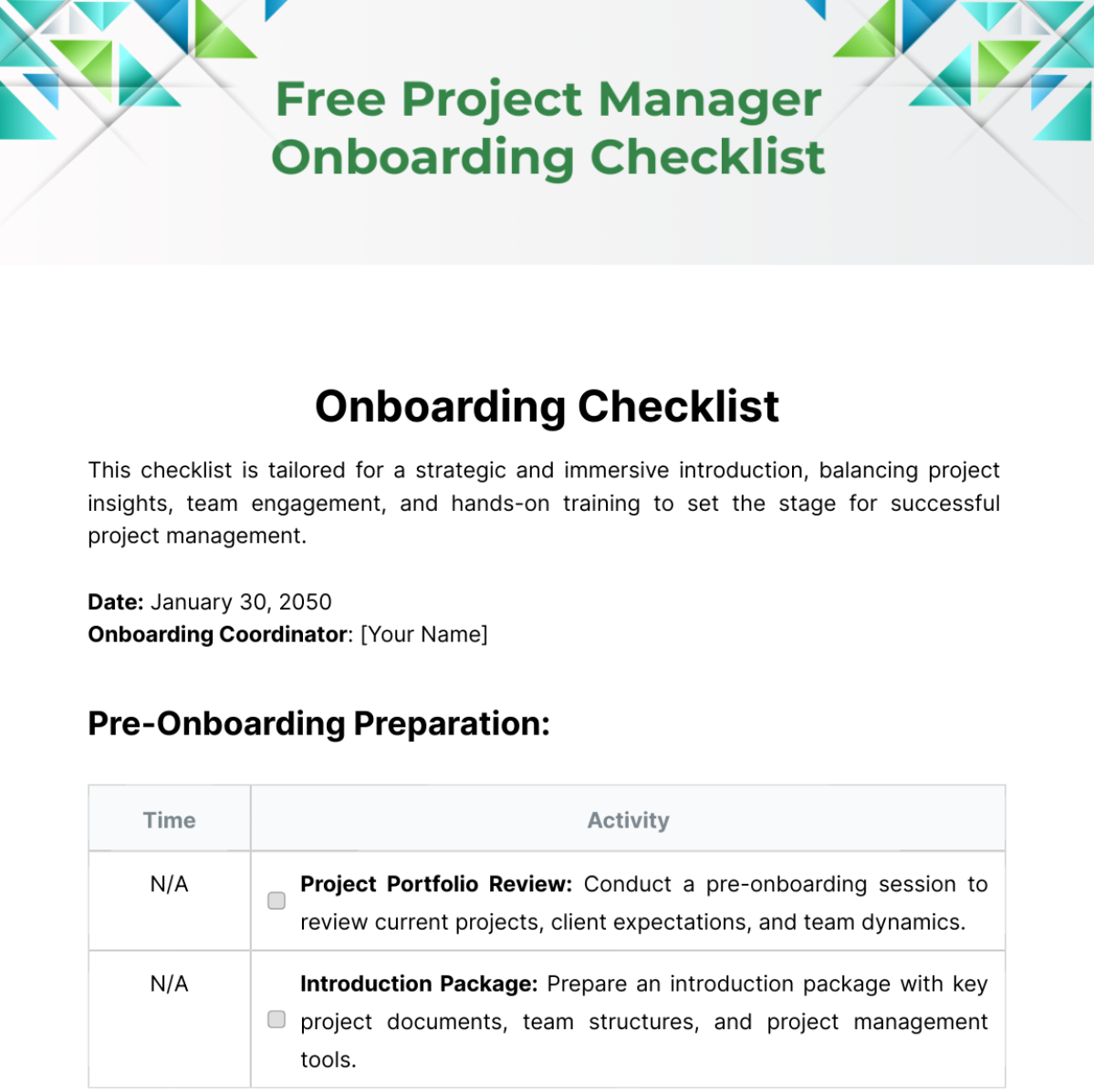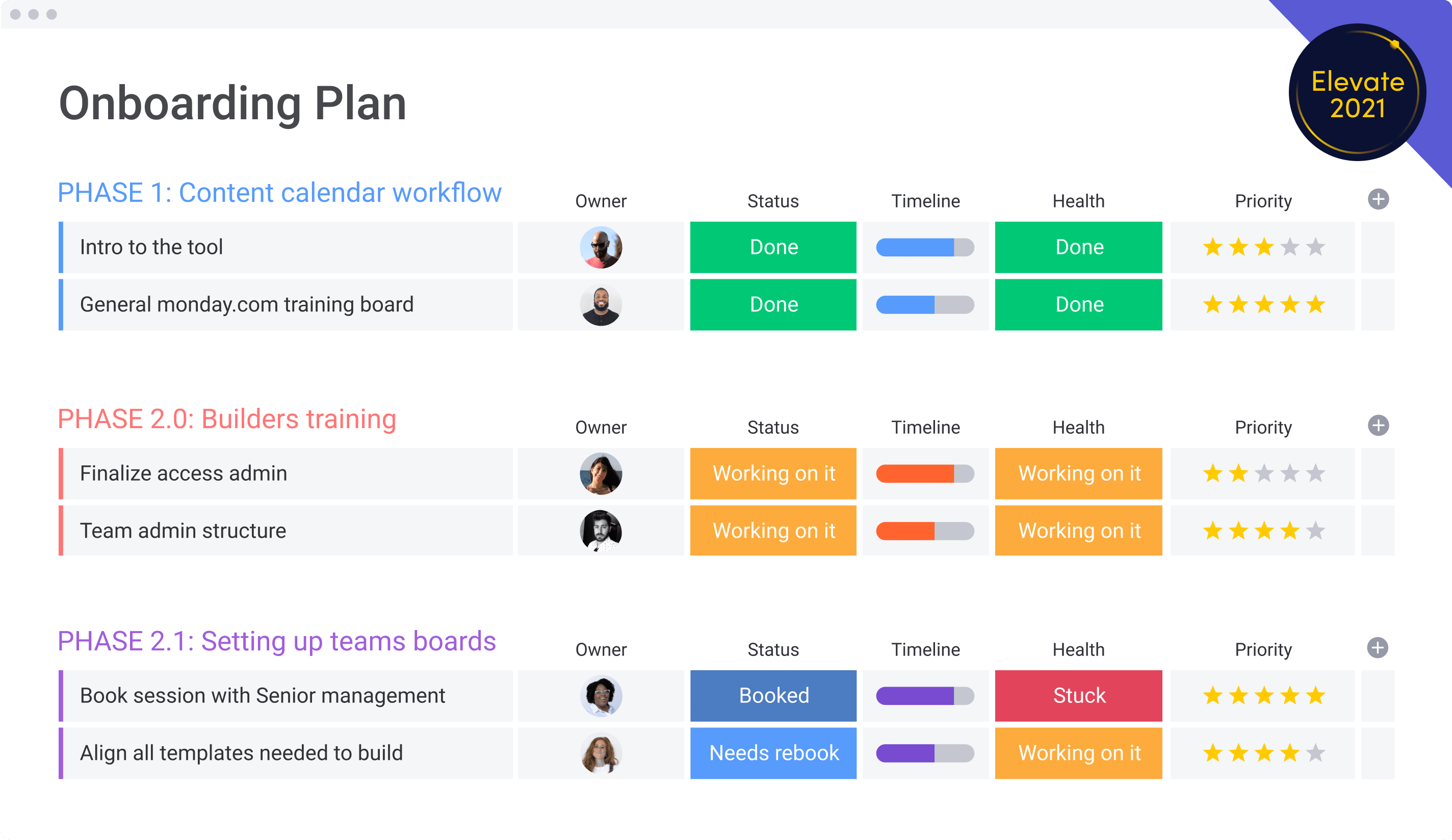The Onboarding Template for Managers That Will Change Your Team
Onboarding is more than just a formality; it’s the crucial first impression your new team member gets of your company, their role, and you as a manager. A well-structured onboarding process sets the stage for success, fostering engagement, productivity, and ultimately, retention. But let’s be honest, a poorly executed onboarding can lead to confusion, frustration, and a quick exit. This article provides a comprehensive onboarding template for managers, designed to transform your team’s experience and set them up for long-term success.
Why Onboarding Matters: The Foundation of Success
Effective onboarding isn’t just about paperwork and HR presentations. It’s about integrating a new hire into your team’s culture, providing them with the tools and knowledge they need to excel, and building a strong foundation for a positive working relationship. Consider these key benefits:
- Increased Productivity: A clear onboarding plan allows new hires to quickly understand their responsibilities and start contributing effectively.
- Reduced Employee Turnover: A positive onboarding experience makes new hires feel valued and connected, increasing their likelihood of staying with the company.
- Improved Employee Engagement: Well-onboarded employees are more likely to be engaged and invested in their work.
- Enhanced Team Cohesion: Onboarding fosters a sense of belonging and helps integrate new hires into the team dynamic.
- Faster Time-to-Competency: A structured onboarding process accelerates the learning curve, allowing new hires to become proficient in their roles more quickly.
Your Onboarding Template: A Step-by-Step Guide
This template provides a framework for a comprehensive onboarding process. Tailor it to your specific team, role, and company culture for optimal results.
Phase 1: Pre-Boarding (Before the First Day)
This phase focuses on setting the stage for a smooth transition.
- Welcome Email: Send a warm welcome email a week or two before the start date. Include:
- A brief overview of the first day’s schedule.
- Contact information for questions.
- Instructions on what to bring (e.g., ID for security).
- A company handbook or relevant resources.
- Prepare the Workspace: Ensure the new hire’s workspace is ready, including:
- Computer and necessary software installed.
- Access badges and security clearances granted.
- Desk supplies and any specific equipment.
- Inform the Team: Notify your team about the new hire’s arrival and encourage them to reach out and connect.
- Assign a Buddy: Designate a team member as a buddy to provide support and answer questions during the initial weeks.
Phase 2: The First Week – Making a Great First Impression
The first week is critical for establishing a positive and productive relationship.
- Day 1: Welcome and Orientation:
- Warm Welcome: Greet the new hire personally and introduce them to the team.
- Company Overview: Provide a high-level overview of the company’s mission, values, and culture.
- Team Introduction: Introduce them to key team members and departments.
- Workspace Setup: Walk them through their workspace and demonstrate how to access necessary resources.
- Initial Training: Cover basic policies, procedures, and essential tools.
- Days 2-5: Deep Dive and Integration:
- Role-Specific Training: Provide detailed training on their specific job responsibilities.
- Team Meetings: Include the new hire in relevant team meetings to foster collaboration and understanding.
- Buddy Check-ins: Ensure the assigned buddy is checking in regularly to provide support and answer questions.
- Goal Setting: Discuss initial goals and expectations for the first 30, 60, and 90 days.
- Feedback and Check-ins: Schedule regular check-ins to monitor progress and address any concerns.
Phase 3: The First Month – Building Momentum
This phase focuses on solidifying understanding and building confidence.
- Ongoing Training and Development: Provide opportunities for continuous learning and skill development.
- Performance Reviews: Conduct regular performance reviews to provide feedback and track progress.
- Project Assignments: Assign meaningful projects that allow the new hire to apply their skills and contribute to the team’s goals.
- Feedback Loop: Encourage open communication and feedback from both the new hire and the team.
- Mentorship Program: If applicable, pair the new hire with a mentor for guidance and support.
Phase 4: Ongoing Support and Development
Onboarding is not a one-time event; it’s a continuous process.
- Regular Check-ins: Continue to hold regular check-ins with the new hire to provide support and guidance.
- Performance Reviews: Conduct regular performance reviews to provide feedback and track progress.
- Professional Development: Provide opportunities for ongoing learning and skill development.
- Feedback and Open Communication: Encourage open communication and feedback from both the new hire and the team.
- Team-building Activities: Facilitate team-building activities to foster a sense of belonging and camaraderie.
Key Elements for a Successful Onboarding Program
- Clarity and Transparency: Clearly define roles, responsibilities, and expectations from the outset.
- Structured Process: Implement a well-defined onboarding process with clear timelines and milestones.
- Personalization: Tailor the onboarding experience to the individual’s role and needs.
- Communication: Maintain open and consistent communication throughout the onboarding process.
- Feedback and Evaluation: Regularly gather feedback from new hires and the team to identify areas for improvement.
- Technology Integration: Leverage technology to streamline the onboarding process, such as using HR software or onboarding platforms.
Conclusion: Transforming Your Team Through Effective Onboarding
By implementing this onboarding template, you can transform your team’s experience, boost productivity, and create a more engaged and successful workforce. Remember that successful onboarding is an ongoing process. Continuously evaluate and refine your onboarding program to meet the evolving needs of your team and organization. Investing in your new hires from day one is an investment in the future success of your team and your company.
FAQs About Onboarding
1. How long should the onboarding process last?
Onboarding should be ongoing, with the initial intensive phase typically lasting from 30 to 90 days. However, the process of integration, development, and support should continue throughout the employee’s tenure.
2. What if I don’t have time for comprehensive onboarding?
Even a basic onboarding program is better than nothing. Start with the essentials, like a welcome email, workspace setup, and introductions. As time allows, gradually expand your onboarding efforts.
3. How can I measure the effectiveness of my onboarding process?
Track key metrics such as employee retention rates, time-to-productivity, employee engagement scores, and feedback from new hires through surveys and check-ins.
4. What are some common mistakes to avoid during onboarding?
Some common mistakes include a lack of planning, insufficient training, neglecting to introduce new hires to the team, and failing to provide ongoing support.
5. How can I get buy-in from my team for the onboarding process?
Involve your team in the process! Solicit their input on the onboarding plan, assign buddy roles, and emphasize the benefits of a smooth onboarding experience for everyone.




